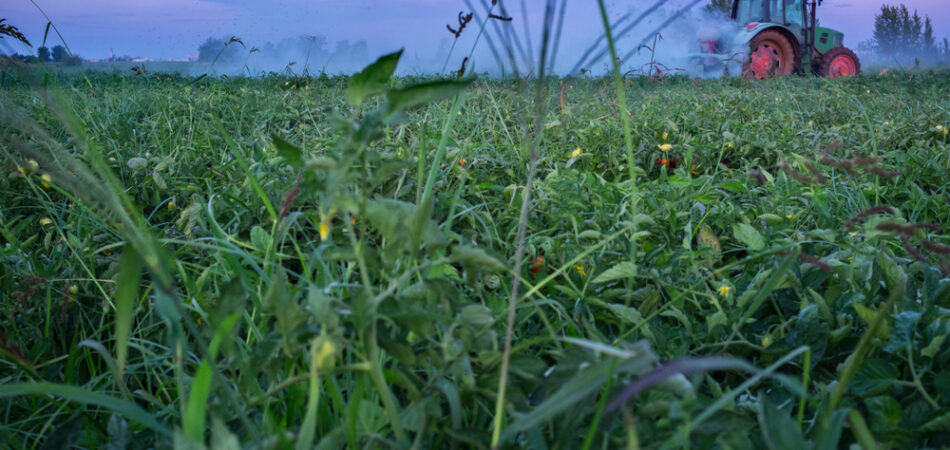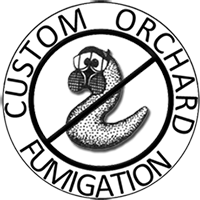
Soil fumigation has long been a cornerstone of modern agricultural management, especially in regions where high-value crops depend on consistent yield and soil health. For farmers in the Pacific Northwest, including Washington and Oregon, understanding the balance between soil fumigation yield benefits and return on investment is essential to long-term profitability. As soil conditions, climate patterns, and crop types vary across the region, the decision to fumigate is both a science and a financial calculation.
This article explores how soil fumigation affects crop yield, the specific challenges faced by farmers in the Pacific Northwest, and how to assess ROI from soil fumigation to make data-driven farming decisions that pay off season after season.
The Role of Soil Fumigation in Crop Performance
Soil fumigation is a pre-plant treatment that controls a broad spectrum of soilborne pests, pathogens, and weeds. It works by introducing gaseous compounds into the soil that target harmful nematodes, fungi, and bacteria that can drastically reduce yield potential. In states like Washington and Oregon, where diverse crops such as potatoes, carrots, berries, and onions dominate the agricultural landscape, soil fumigation plays a pivotal role in yield consistency.
The soil fumigation yield benefits are most evident in fields with a history of disease pressure or poor soil rotation options. For example, Verticillium wilt and root-knot nematodes are common problems across the Pacific Northwest. Without proper control, these pathogens can linger in the soil for years, leading to declining returns. Fumigation interrupts this cycle, allowing healthier root development and stronger nutrient uptake, which ultimately translates to improved crop yield.
While fumigation is often viewed through a cost-based lens, its long-term agronomic impact is equally important. Healthier soils lead to better stand establishment and more uniform plant growth, which supports predictable harvest schedules. For growers balancing tight labor and equipment windows, that predictability is invaluable.
Economic Considerations and ROI from Soil Fumigation
When evaluating ROI from soil fumigation, Pacific Northwest farmers must consider both direct and indirect benefits. The direct costs of fumigation include chemical application, equipment, and compliance with Washington and Oregon regulatory standards. However, the indirect benefits—yield gains, reduced replanting, and improved crop quality—often outweigh the upfront expenses when measured across multiple seasons.
Return on investment calculations for fumigation typically begin with yield response data. For example, potato growers in central Washington may see 10–25% yield improvement fumigation results depending on soil health and rotation history. For high-value crops like onions or carrots, even a modest increase in marketable yield can translate to thousands of additional dollars per acre.
A realistic ROI assessment should account for:
-
Baseline yield without fumigation
-
Estimated yield improvement fumigation percentage
-
Crop market price
-
Input costs for fumigants and application
-
Soil test results and pathogen load
For example, if a Washington farmer typically produces 30 tons of potatoes per acre but achieves 36 tons after fumigation, the yield increase of 6 tons (a 20% boost) could easily offset treatment costs if the market price supports the margin. Over time, as disease pressure remains lower, fumigation can reduce the need for additional chemical inputs, further improving ROI.
Soil Fumigation Practices in Washington and Oregon
The Pacific Northwest’s unique climate and soil profiles mean fumigation practices must be adapted to local conditions. In Washington, where volcanic soils and semi-arid climates dominate, proper moisture management is critical for fumigant distribution. In contrast, Oregon’s coastal and valley regions present challenges with heavier soils and higher organic matter content, which can absorb fumigants differently.
Growers in both states rely on precision application to maximize soil fumigation yield benefits. Equipment calibration, soil temperature monitoring, and timing the application before the rainy season are all vital steps in ensuring effective soil treatment. Fumigation is most efficient when soil temperatures are between 50°F and 80°F, with moderate moisture content that allows even gas diffusion.
Regulatory frameworks in WA and OR also shape how and when fumigation can be applied. Both states enforce strict guidelines on buffer zones, notification requirements, and applicator certifications. These measures ensure environmental safety and worker protection but also require advanced planning. For instance, Oregon’s Department of Agriculture mandates detailed fumigation management plans that include air monitoring and post-application reporting.
Despite these compliance steps, many Washington and Oregon farmers continue to see consistent yield improvements after proper fumigation. The investment in compliance often results in cleaner fields, fewer replanting issues, and improved crop uniformity, all of which directly enhance ROI from soil fumigation.
The Science Behind Improvement Fumigation and Soil Health
Improvement fumigation, a term used to describe the targeted use of fumigants to restore soil productivity, goes beyond pest suppression. It rebalances microbial populations, enhances root growth, and optimizes nutrient exchange within the soil matrix. In the Pacific Northwest, where cool, wet springs can delay planting and encourage disease, fumigation helps prepare soil for vigorous early root establishment.
Research across Washington State University and Oregon State University extension programs shows that fumigated soils often demonstrate improved water infiltration and oxygen exchange. These physical changes help roots grow deeper and access nutrients more efficiently, further amplifying the soil fumigation yield benefits.
The microbial dynamics following fumigation are also notable. While fumigation initially reduces microbial diversity, beneficial organisms such as Bacillus and Pseudomonas species typically recolonize quickly, sometimes within weeks. This rebound supports long-term soil vitality and disease suppression, especially when combined with proper crop rotation and organic matter management.
In essence, improvement fumigation serves as a reset button for soil health. By breaking cycles of disease and compaction, it creates an environment where subsequent crops can thrive with fewer interventions. This balance between immediate pest control and long-term soil health makes fumigation one of the most strategic agronomic tools available to Pacific Northwest growers.
Maximizing Returns Through Strategic Application
To achieve maximum ROI from soil fumigation, farmers in Washington and Oregon must take a data-driven approach. Blanket fumigation across every field is rarely economical. Instead, precision targeting of high-pressure zones, guided by soil sampling and historical yield mapping, provides better cost efficiency.
Timing is another critical factor. Fumigation performed too close to planting can risk phytotoxicity, while delayed treatments can lose efficacy as soil conditions change. Ideally, fumigation should occur several weeks before planting, allowing adequate aeration and gas dissipation. This window ensures crops establish in a pathogen-free environment without residual chemical stress.
Integration with other soil improvement practices further enhances results. For example, coupling fumigation with cover cropping, gypsum amendments, or composted organic matter helps maintain soil structure and fertility post-treatment. Many Washington and Oregon growers use this integrated approach to sustain yield gains over multiple rotations.
From a financial perspective, tracking fumigation ROI across several seasons provides the most accurate picture. A single year’s results may not capture cumulative benefits such as reduced disease recurrence or improved soil tilth. By documenting yield changes, input savings, and overall profitability, farmers can fine-tune their fumigation strategies for specific crops and soil types.
Precision agriculture technologies are also transforming how soil fumigation is managed. Variable rate applications, GPS-guided injectors, and digital soil mapping allow growers to customize treatments based on field variability. In the Pacific Northwest, where topography and soil texture can change drastically within a few acres, these innovations can reduce costs and enhance uniformity of yield improvement fumigation outcomes.
Conclusion
For farmers across the Pacific Northwest, particularly in Washington and Oregon, soil fumigation remains one of the most effective tools for protecting yield potential and sustaining soil productivity. The soil fumigation yield benefits extend far beyond a single season, providing long-term returns through healthier soils, improved root systems, and reduced disease pressure. When carefully planned and executed, the ROI from soil fumigation often surpasses expectations, even when accounting for regulatory compliance and application costs.
Success depends on informed decision-making. Understanding local soil conditions, choosing the right fumigant, and applying it with precision can mean the difference between a marginal gain and a transformative improvement in crop yield. For growers who view soil as both an asset and an investment, soil fumigation offers a proven path toward lasting profitability in the challenging and diverse agricultural environments of the Pacific Northwest.
Need Customized Soil Solutions in Pasco, WA?
Founded in 1992, Custom Orchard Fumigation was created by farmers for farmers. We take great pride in providing soil fumigation services to farmers throughout the state. We can also help growers find other services to help in growing their crops. We also provide all paperwork for our services to ensure all regulations are met. Our founder, Chris Ford, has a background in Forest Management, and we are conscious of reducing the environmental impact on the soil and surrounding areas of your plot. Custom Orchard Fumigation invites you to visit our website or give us a call today!
